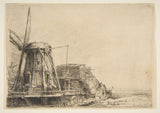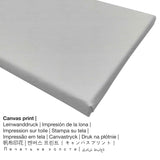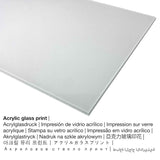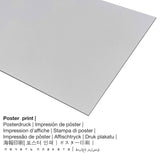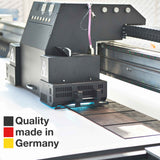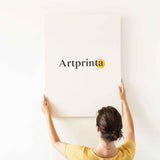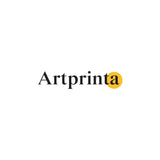Rembrandt van Rijn, 1641 - Windmill - mbipụta nka mara mma
Ụtụ gụnyere. Mbupu gbakọrọ na ndenye ọpụpụ.
General information from the museum's website (© - The Metropolitan Museum of Art - Museumlọ ihe ngosi nka nke Obodo)
Rembrandt depicted the boundary between city and countryside. The print shows the so-called Little Stink Mill, an actual windmill that stood on the De Passeerde bulwark along the city wall that ran down the west side of Amsterdam. The mill was owned by the Leathermakers Guild and its nickname derived from its activity of softening tanned leather by treating it with cod liver oil. Rembrandt traced the mill and its surroundings in such detail that it seems likely he began the print on site and then finished it in the studio. Visible in the sky are diagonal striations that result from his having brushed acid over the surface of the printing plate for effect, and craquelure was more likely the result of an accident that occurred as the plate was being bitten by the acid.
Nkọwa gbasara akụkụ nka pụrụ iche
| Aha nka: | "The Windmill" |
| Nhazi: | sere |
| Okwu mkpokọta: | nka ochie |
| Century: | 17th narị afọ |
| Year: | 1641 |
| Afọ nka: | 370 afọ |
| Ihe osise izizi: | etching, with touches of drypoint |
| Akụkụ nke ọrụ nka mbụ: | Sheet: 5 7/8 x 8 5/16 in (15 x 21,1 cm) |
| Egosiputara na: | Museumlọ ihe ngosi nka nke Obodo |
| Ebe ebe ngosi nka: | New York City, New York, Njikota Obodo Amerika |
| Webụsaịtị ihe ngosi nka: | Museumlọ ihe ngosi nka nke Obodo |
| Ụdị ikike nka: | ngalaba ọha |
| Site n'aka: | The Metropolitan Museum of Art, New York, Gift of Felix M. Warburg and his family, 1941 |
| Ebe kredit nke ọrụ nka: | Gift of Felix M. Warburg and his family, 1941 |
Nkọwa onye nka
| Ihe nkiri: | Rembrandt van Rijn |
| Gender: | nwoke |
| Obodo onye nka: | Dutch |
| Ọrụ: | onye na-ese ihe |
| Obodo onye nka: | mba netherland |
| Nhazi nke onye nka: | nna ukwu ochie |
| Ụdị nka: | Baroque |
| Akwụsị: | 63 afọ |
| Afọ ọmụmụ: | 1606 |
| Ebe amụrụ onye: | Leiden |
| Nwụrụ n'afọ: | 1669 |
| Nwuru na (ebe): | Amsterdam |
Nkọwapụta ngwaahịa
| Nkewa edemede: | mmepụta nka |
| Usoro mmeputakwa: | dijitalụ mmeputakwa |
| Usoro nhazi: | mbipụta dijitalụ (Mbipụta UV ozugbo) |
| Mmalite nke ngwaahịa a: | emepụtara na Germany |
| Stockdị ngwaahịa: | mmepụta ihe na-achọ |
| Eji ngwaahịa emebere: | mgbidi mgbidi, nka mgbidi |
| Nhazi: | nhazi odida obodo |
| Ụdị anya: | 1.4:1- ogologo: obosara |
| Nsonaazụ nke oke onyonyo a: | ogologo bụ 40% ogologo karịa obosara |
| Materials: | Mbipụta kwaaji, mbipụta ọla (aluminium dibond), mbipụta akwụkwọ mmado (akwụkwọ kwaaji), mbipụta enyo acrylic (nwere ezigbo mkpuchi iko) |
| Mbipụta kanvas (akwa akwa na etiti ihe ndọtị): | 70x50cm - 28x20", 140x100cm - 55x39" |
| Mbipụta iko acrylic (nke nwere ezigbo mkpuchi iko): | 70x50cm - 28x20", 140x100cm - 55x39" |
| Nhọrọ nha nke akwụkwọ mmado (akwụkwọ kwaaji): | 70x50cm - 28x20" |
| Nhọrọ nke mbipụta aluminom (aluminium dibond material) | 70x50cm - 28x20", 140x100cm - 55x39" |
| ụba: | mbipụta nka na-enweghị isi |
Nye iwu ihe ịchọrọ idowe n'ụlọ gị
In the dropdown menu next to the product offering you can pick the size and materialaccording to your individual preferences. Therefore, we allow you to choose among the following options:
- Mbipụta iko acrylic (nke nwere ezigbo mkpuchi iko): A glossy print on acrylic glass, often named a UV print on plexiglass, will change your chosen original artwork into lovely wall décor and is a viable alternative to dibond and canvas prints. The artwork is made with the help of modern UV direct printing technology. This creates vivid, impressive colors.
- Mbipụta kwaaji: A printed canvas, not to be mistaken with a canvas painting, is a digital copy applied onto canvas. It creates the special impression of three-dimensionality. Canvas prints are relatively low in weight, which implies that it is quite simple to hang up your Canvas print without the use of additional wall-mounts. Therefore, canvas prints are suited for all types of walls.
- Akwụkwọ mmado na ihe kwaaji: The poster print is a printed cotton canvas with a slight surface structure. The poster is perfectly used for framing your art replica in a customized frame. Please bear in mind, that depending on the absolute size of the poster print we add a white margin 2-6cm round about the print, which facilitates the framing with a custom frame.
- Aluminom dibond (ọkpụkpụ ọla): This is a metal print manufactured on aluminium dibond with an impressive depth effect, creating a contemporary look throuch a surface , which is non-reflective. The Direct Print on Aluminum Dibond is the perfect introduction to reproductions produced on aluminum. For our Direct Aluminium Dibond print, we print the artwork right onto the surface of the aluminum composite. The bright & white parts of the work of art shimmer with a silk gloss, however without glow.
Nkọwapụta ngwaahịa nka
Ikuku Ugbo bụ ihe nka nke onye na-ese ihe kere Rembrandt van Rijn n’afọ 1641. The more than 370 year old original creation measures the size of Sheet: 5 7/8 x 8 5/16 in (15 x 21,1 cm) ma arụpụtara ya na ọkara etching, with touches of drypoint. The artpiece gụnyere na dijitalụ collection nke Museumlọ ihe ngosi nka nke Obodo, nke bụ otu n'ime ụlọ ngosi ihe ngosi nka kachasị ukwuu na nke kachasị mma n'ụwa, nke gụnyere ihe karịrị nde abụọ ọrụ nka nke gbara puku afọ ise nke omenala ụwa, site na prehistory ruo ugbu a na site n'akụkụ ọ bụla nke ụwa. nka ochie ọrụ nka, nke bụ nke ngalaba ọha is being included with courtesy of The Metropolitan Museum of Art, New York, Gift of Felix M. Warburg and his family, 1941. In addition to that, the artpiece has the following creditline: Gift of Felix M. Warburg and his family, 1941. Besides, the alignment of the digital reproduction is landscape with a side ratio of 1.4 : 1, which implies that ogologo bụ 40% ogologo karịa obosara. Rembrandt van Rijn was a male painter from the Netherlands, whose art style can primarily be classified as Baroque. The Baroque artist was born in the year 1606 na Leiden ma nwụọ mgbe ọ dị afọ 63 n'afọ 1669.
Nkwupụta iwu: We try our best in order to describe the art products as clearly as possible and to illustrate them visually. At the same time, the tone of the printed materials and the print result may diverge somehwat from the image on the monitor. Depending on the settings of your screen and the nature of the surface, not all color pigments are printed 100% realistically. Since the fine art prints are printed and processed manually, there might as well be minor deviations in the exact position and the size of the motif.
Ederede a bụ ikike ọgụgụ isi ma chekwaa ya site na nwebisiinka © | Artprinta.com

